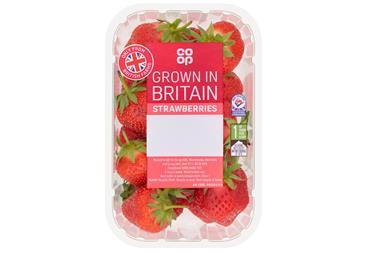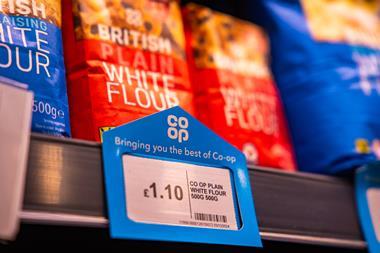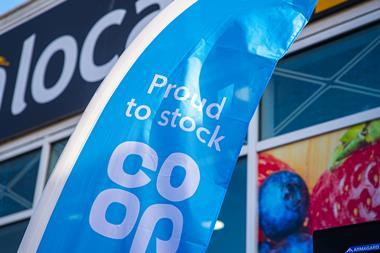The foundations of the modern co-op were laid nearly 170 years ago in Rochdale, near Manchester. This month, to mark the UN’s International Year of Co-operatives, 1,500 co-ops from around the world will return to Lancashire to celebrate the movement. But what state will they find the British co-operative sector in?
It won’t have escaped many people’s attention that 2012 is the UN International Year of Co-operatives. On 29 October, co-ops from across the globe will descend on Manchester - home to The Co-operative Group, Europe’s largest consumer co-op - to celebrate the spirit of co-operation during a three-day event dubbed ‘Co-operatives United’.
The event will include exhibitions, seminars and the premiere of the feature film The Rochdale Pioneers, which tells the story of the movement’s formation in the 19th century. ‘The Co-operative Revolution’ is also the subject of a new graphic novel to mark the occasion (see illustrations left and right). It’s a fascinating story that leaves you in no doubt as to how pioneering the Rochdale Pioneers were - and comes after what can only be described as a year of mixed fortunes for the movement in the UK.
The Co-op Group has experienced some real highs and lows. In July, it agreed a major deal to acquire 635 Lloyds bank branches. However, its sales and profits have been badly hit by the economic slowdown and its influential CEO Peter Marks has announced his retirement. Conversely, many of the 18 independent retail co-ops that make up The Co-op Group’s buying group The Co-operative Retail Trading Group, have posted robust sales. So just how healthy is the UK co-operative movement at the moment - and what does the future hold in store?
When The Grocer last examined the retail co-op movement in April 2009, the buzz was about mergers and acquisitions and Marks was calling for the creation of one co-op society. The Co-op Group had just acquired Somerfield and smaller retail co-ops were busy merging with each other. However, since then, this frenetic activity has come to a halt. In fact, there hasn’t been a merger of societies since Moulton Co-op merged with Midlands Co-op in February 2009. Co-ops are instead looking beyond the co-op movement to expand.
The Co-op comic
Forget the X-men. The 28 Rochdale Pioneers are the real heroes. Now, the forward-thinkers who set out the principles that co-ops across the world still follow today, have been immortalised in a new graphic novel by artist Polyp. The book - commissioned by the Co-operative Group to mark the UN Year of Co-ops - tells the story of the revolutionaries and their aim of establishing a system to provide clean, cheap and unadulterated food and imagines a future in which the pioneers’ successors launch an interplanetary co-operative on Mars.
There have already been two major deals this year. In its bid to open 300 new stores in three years, The Co-op Group acquired Scottish convenience store chain David Sands in January, just two months after buying three Budgens in Wiltshire and Oxfordshire. And in April, Midcounties Co-op snapped up Harry Tuffins, a Nisa retailer operating in the Welsh Borders.
The co-ops have ramped up their growth plans in an effort to compete with the multiples, which continue their relentless move into convenience - the format traditionally favoured by co-ops. Co-op-owned retailers increased their collective store estate by 5.26% in 2011, but the multiples collectively grew theirs by 7.82% [Grocery Retail Structure, 19 May 2012]. So there’s unlikely to be any let-up soon.
Midlands Co-op, which is the amalgamation of 80 co-ops, has laid out plans to expand its estate by 65 stores by the end of 2015. The society, which has nearly 200 food stores, is “very acquisitive” and is looking for stores in “communities that we don’t currently trade in”, confirms head of food retail Michael Spencer.
CEO Martyn Cheatle is bullish about its prospects. “Midlands Co-op is set for another year of growth as we look to further increase our retail estate with new builds and acquisitions, creating new jobs within our local communities,” he says. “We already have a number of new food stores under construction and are constantly looking for opportunities to grow our retail estate. Our strong like-for-like performance has been a key driver of our growth, supported by continued investment in refurbishments of our existing stores.”
Midlands is one of the 18 independent societies that share the buying power, marketing and in most cases fascia and dividend card of The Co-op Group, but also have the freedom to tailor their offer to the communities they serve - and to acquire new stores. Many cite acquisitions as key to their plans over the next 12 months.
Ursula Lidbetter, CEO of Lincolnshire Co-op, says the society has “several openings coming up” as part of its new foodstore expansion programme. More stores is not the only objective. It is also developing a 10-acre science and innovation park in Lincoln as a joint venture with the University of Lincoln. Meanwhile, East of England Co-op has a £107.2m commercial and property portfolio including flats and offices that it is keen to expand alongside its store estate.
The catch is that there was so much consolidation a few years ago - 10 co-ops merged between 2005 and 2009 - that options are limited, a problem only compounded by the fact that indie co-ops tend to operate in very specific areas of the UK.
“There is a smaller field from which to merge,” says a Scotmid spokesman. “It is almost the same as trying to buy other businesses. Taking Scotland as an example, larger independent retailers such as Morning Noon and Night and Botterills came to us, with David Sands going to the Group. That tends to narrow the field a great deal.”
A smaller field hasn’t stopped independent co-ops from thriving, with many posting stronger figures than their larger counterpart, The Co-op Group, albeit from a much smaller base. Midlands Co-op, the UK’s second-biggest co-op, has notched up record profits of £26.6m this year, and Midcounties Co-op, the third-biggest society, has reported a 6.7% sales hike and a 15% boost to profits. By contrast, The Co-op Group reported a 5.8% drop in full-year profits and a 1% drop in sales in March this year.
Unfortunately, this can colour people’s perception of the whole movement. Many shoppers do not understand that a store that says ‘The Co-operative’ above the door is not necessarily part of The Co-op Group.
“We do get queries from customers who confuse us with The Co-op Group, especially where we trade in similar geographical areas,” says Roger Grosvenor, executive officer for retail at East of England Co-op. “We ensure that our colleagues in store understand we are an independent local society and can explain this to customers.”
Lincolnshire Co-op’s Lidbetter is certainly confident its 210,000 members know who it is. “If we get visitors to our stores from other areas we’re happy to explain the different co-ops and what they do,” she says.
Despite the confusion, most independent societies insist they have no intention of merging with the Co-op Group. Indeed, they argue, much of their success can be attributed to the very fact they have individual identities.
“We see many advantages to remaining independent, including having a strong local brand and being able to respond to the needs and demands of our local members and customers,” explains Grosvenor. “This is demonstrated by our Sourced Locally initiative. One of the major features is being able to work with local suppliers and arrange delivery direct from farm to store something that wouldn’t be possible at a larger society.”
Consumers are getting the message, adds the Scotmid spokesman. “With our regional committees now awarding hundreds of community grants every year, the message is getting across that there is a difference,” he elaborates. “Our real work in the community is often not done for the sake of publicity, but to really help the communities that we serve. An example of this is our defibrillator campaign, where 40 of our stores now have them with staff and local community trained in their use.”
Being smaller can be a virtue, agrees Midlands’ Spencer. “Being the biggest doesn’t always mean being the best,” he says. “We can do things faster and the society has a real pace and appetite to change.”
Strong trading has also allowed societies to branch out into new business sectors. “Our increase in profits has allowed us to invest in all of our businesses, most notably the growth of our childcare, travel and energy groups,” says Midcounties Co-op deputy CEO Andy Cresswell. “From a financial standpoint, the range of businesses we operate can support the development of our growing businesses, which in turn allows us to be flexible and respond to market needs and opportunity.”
The fact that Midcounties, like all co-ops, is owned by its members has other benefits too. “It means we receive regular feedback from our members and taking action on this feedback improves us as a retailer,” Cresswell says. “It’s not shareholders, aiming for the highest possible return, who make our business decisions, it’s members who live and work in the communities we serve.”
Little wonder then that The Co-op Group is taking a leaf out of the indie co-ops’ book. It is currently trialling new formats in 12 stores - featuring ranges tailored to local demographics - after admitting that its previous ‘one-size-fits-all’ approach to product ranges wasn’t working. It is also piloting the introduction of Post Office facilities. Initial data suggests this is paying off. The society has reported a 12.5% uplift in like-for-like sales in trial stores and is expected to provide further details in the new year.
When Marks announced his retirement in August, he told The Grocer that his biggest achievement had been to unify the co-op movement. “The merger between United and Yorkshire started off the consolidation,” he said. “Not everyone has agreed with me… and it’s not quite one society, but to all intents and purposes we did it.” And that has to be a real cause for celebration - not just of what has been achieved by the co-op movement to date, but what could be.



















No comments yet